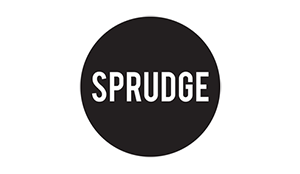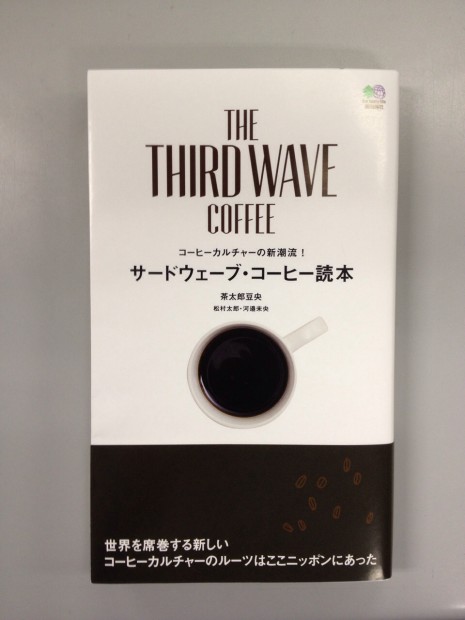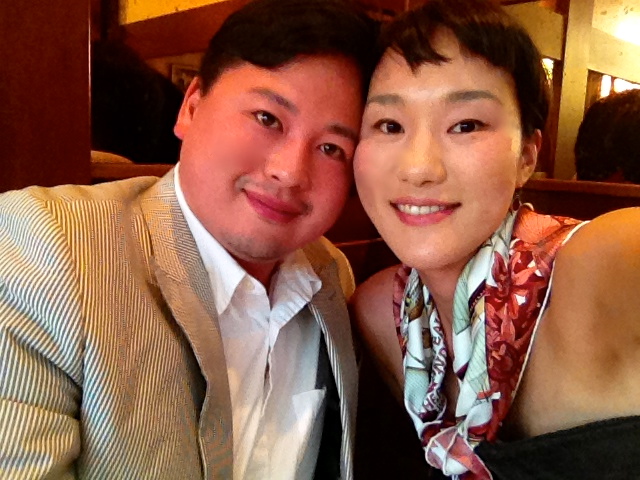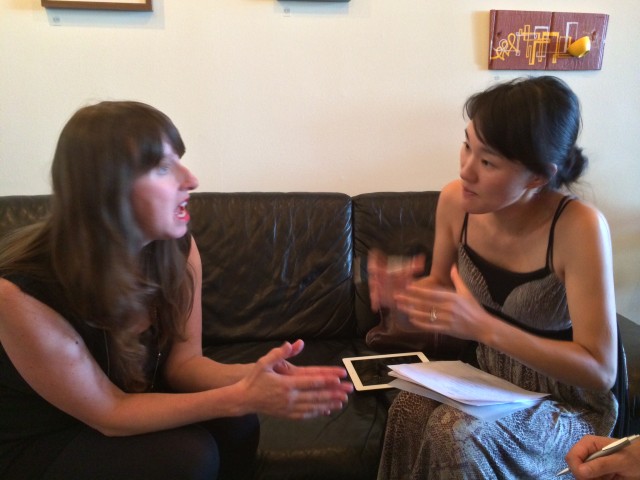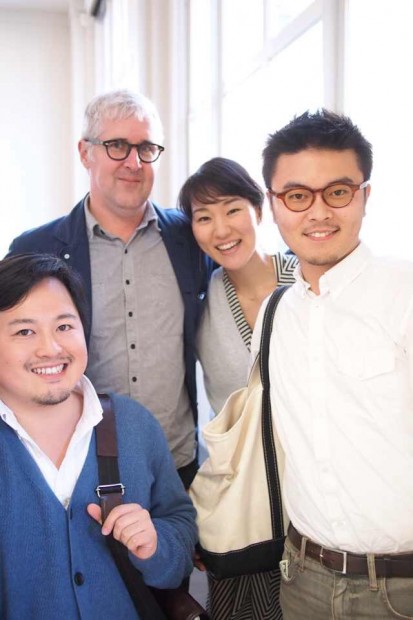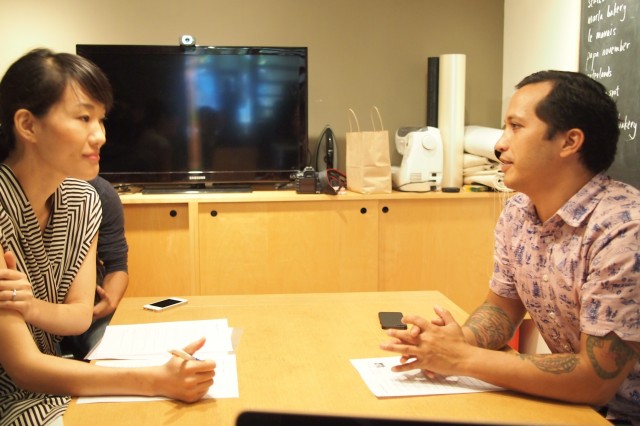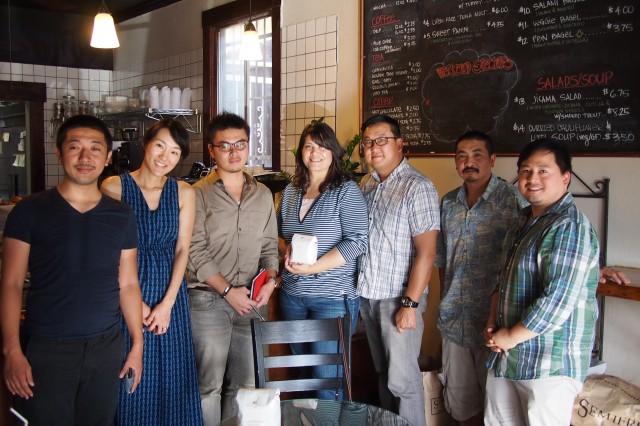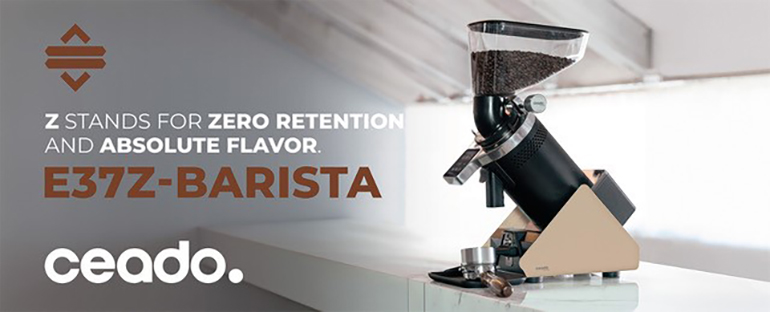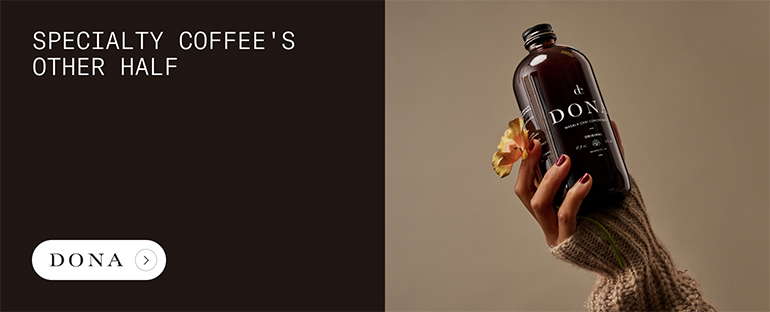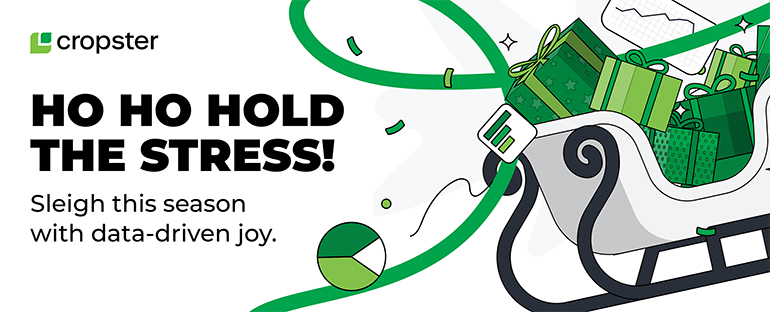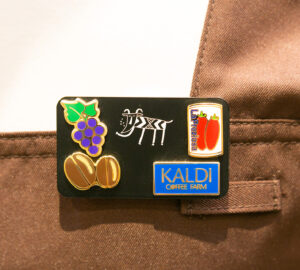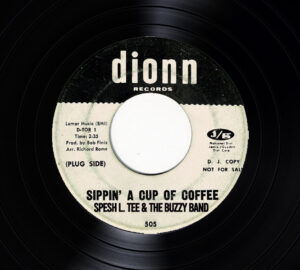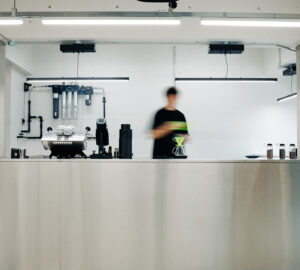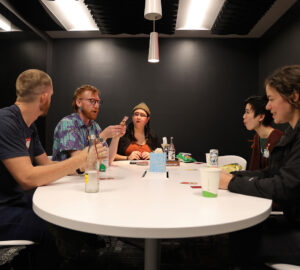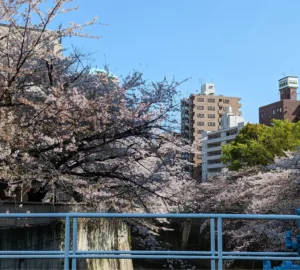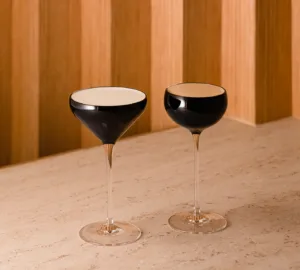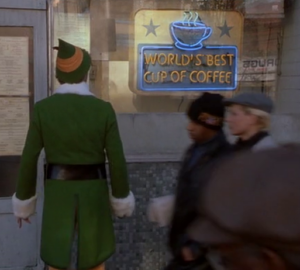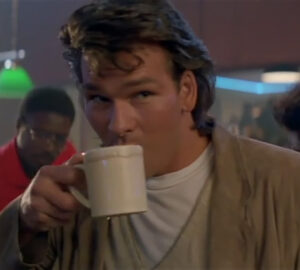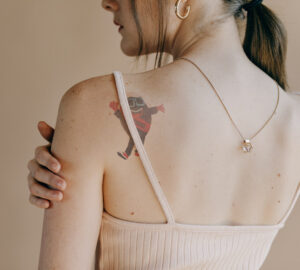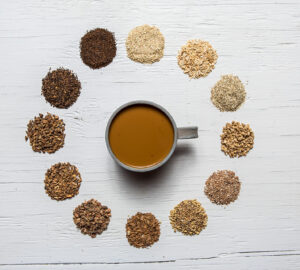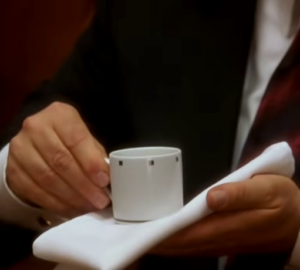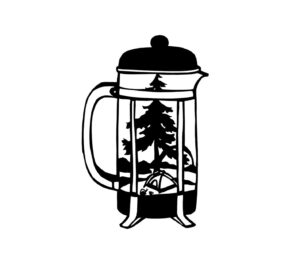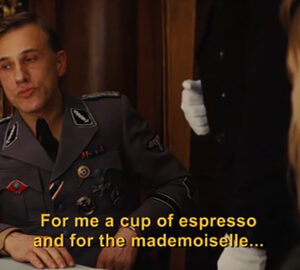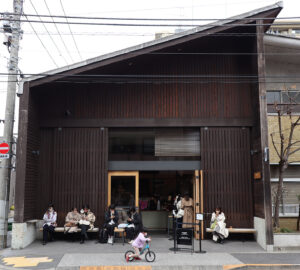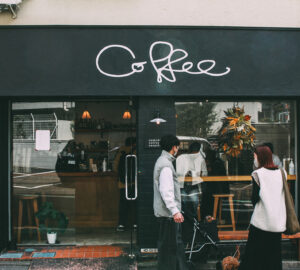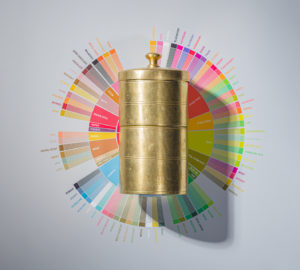This feature by first-time contributor Richard Sandlin was developed as part of our Barista Nation LA pitch session.
I first met Chataro Mameoh – the combined name of husband & wife duo Taro Matsumura and Meoh Kawabe Matsumura – at the TED conference in February 2013, where I was lucky enough to be a part of the SCAA volunteer coffee service program. But long before my career in coffee, I spent time living as a student in Tokyo, and today I am still eager to speak Japanese with anyone who’ll have me. Taro, a longtime technology journalist and TEDxTokyo supporter, had been tasked to cover the conference in Long Beach.
Chataro Mameoh is a self-described “merging of Japanese and American culture through the lens of Japanese journalists,” and for me, meeting them was kind of a perfect moment. Taro, eager to improve his English and explore his new passion for coffee, and I, eager to spark dialogue with TED attendees and practice my Japanese, quickly traded business cards. A friendship has since formed, culminating the interview you see below.
On November 6th, 2013, Chataro Mameoh released their first book in Japan, entitled “The Third Wave Coffee” and published by EI Publishing Co., Ltd. As full disclosure, I’m featured briefly in the book, but far more fascinating are Chataro Mameoh’s work with some of the most important influencers in the Bay Area – including Eileen Hassi of Ritual Coffee, Trish Rothgeb of Wrecking Ball Coffee Roasters and CQI, and James Freeman of Blue Bottle Coffee. It’s a candid look at the Bay Area’s best and brightest, from the perspective of curious and engaged outsiders. American specialty coffee culture, reflected back through a Japanese view finder. It makes for fascinating reading, and it’s my pleasure to present this interview with the book’s authors, Taro Matsumura and Meoh Kawabe Matsumura.
Please Introduce Yourself
Taro: I’m the Co-Founder of Chataro Mameoh. But in addition, I’ve published 10 books (all in Japanese) on mobile phones, tablets, social media and other technologies. Recently, I’ve joined as the Vice Principal of Code Academy High School in Nagano, Japan. Currently, I live in Berkeley, California as a foreign journalist covering all things technology to be shared in Japan.
Meoh: I’m also co-founder of Chataro Mameoh. Currently, I’m an author and housewife. Prior to moving to Berkeley, California I worked in fashion media in Tokyo, Japan.
Taro: We moved to Berkeley, California shortly after Steve Jobs died in October 2011. As a technology journalist, it was always my dream to interview Steve Jobs. I missed my chance. When Steve Jobs died, Meoh and I decided to follow our dreams, learn English and continue exploring the innovative Silicon Valley technology industry. We moved to Berkeley in November 2011 and barely spoke a word of English.
What is “Chataro Mameoh”?
Meoh: Our first names are “Taro” and “Meoh.” In Japanese, “Cha” (茶) means “Tea” and “Mame” (豆) means “bean.” “Chataro Mameoh” is a mixture of traditional Japanese Tea culture and Bay Area Third Wave coffee culture. Taro and I are exploring the Bay Area through coffee and we share our experiences as Japanese writers. We are “Chataro Mameoh”, a merging of Japanese and American culture through the lens of Japanese journalists.
One year ago, we started the “Chataro Mameoh” project as an online newsletter for our Japanese readers. Each month, we mailed our followers a bag of Bay Area Third Wave beans and a story. The traditional Japanese tea ceremony or “Sadou” (茶道)requires a story. In “Sadou” one cannot simply drink tea; rather, the person serving the tea must share a story with the person they serve. This story is called “cha banashi” (茶話).
Taro: For us, the “Ko-hi banashi” is our experience with Bay Area Third Wave coffee; it’s totally new for us. The taste is different – especially in Berkeley. When we first arrived, we were surprised to find that Starbucks isn’t as popular as it is in Tokyo. We wanted to share our new passion for coffee with our Japanese readers. In Japan, we have “Kissaten” (喫茶店), our traditional coffee shop culture that has over 100 years of history. We wanted to share with our readers the alternative to big coffee here in the Bay Area.
Meoh: Our newsletters were so popular, that our customers told us to publish a book. So we did.
What is “The Third Wave Coffee” book about?
Taro: We are most interested in the people of the Bay Area Third Wave coffee industry, the alternative business models and how to spend “coffee time.”
Meoh : We cover the history of the “waves”, look at alternative business models in the coffee industry, the tools of Third Wave Coffee culture and the success of the domestic household brand, Hario. We are focused on “coffee time.”
What do you mean by “Coffee Time”?
Taro: When we were living in Tokyo, coffee experiences weren’t special. It was just something to drink when working. In Tokyo, it’s not uncommon to work 18 hours a day and coffee isn’t an experience, it’s something to keep you working.
I love coffee. It motivates me and the entire industry is thrilling. When we moved to Berkeley, we spent a lot of time making and drinking coffee. I realized that the process of making a cup of coffee is slow (unlike most of my life) and was something to treasure. Every morning, Meoh and I spend 15 minutes to produce one cup of coffee. In Tokyo time, finding 15 minutes to spare isn’t easy. Here, the process is inspirational and meditative. We boil the water, grind the beans, use the tools and enjoy together. When we go to Third Wave coffee shops, the Barista shares the story of the cup and the process with us. “Coffee time” is something to cherish.
Who did you Interview for this book?
Meoh: Trish Rothgeb of Wrecking Ball Coffee Roasters, Eileen Hassi of Ritual Coffee Roasters, James Freeman from Blue Bottle Coffee, Jeremy Tooker from Four Barrel Coffee, Jack Dorsey from Square, Carlo & Luigi Di Ruocco from Mr. Espresso, representatives from Hario’s International Division and more.
How does Bay Area coffee differ from Tokyo coffee?
Taro: Tokyo coffee is smoky, cigar-like and full bodied. In Tokyo, we prefer deeper roaster beans. Tokyo roasters want to highlight the bitter and sweet aspects of coffee. Third Wave Bay Area coffee roasters want to highlight acidity, floral, fruity, sweet and the complexities of coffee.
Meoh: When we first moved to the Bay Area, I was surprised by Third Wave coffee culture’s taste. It was all too sour! Now, I love its sweetness and acidity.
In addition, Japanese people don’t know about coffee’s background. In addition to taste, I was shocked by how much Americans know about coffee; where it comes from and it’s sustainability initiatives like Fair Trade, Direct Trade and Organic. In Japan, we just consume coffee. Yes there are people out there doing amazing and new things at places like Omotesando Koffee, Ogawa Coffee, Arise Coffee Roasters and Maruyama Coffee, but this is not the norm. In our experience, Bay Area Third Wave consumers are learning about coffee and where it comes from. Japanese Third Wave Coffee consumers aren’t there yet.
Who is the Bay Area coffee industry inspires you?
Taro: It’s difficult. Our experience so far is just the field work we did in writing our book. All the people we interviewed are leaders and there are so many people we couldn’t meet due to scheduling.
Meoh: James Freeman, because he loves Japan. We read his book and he talks about Japanese “kissaten” culture and we were inspired and happy that he talked about our culture to American people. We learned from him how Japanese coffee culture has inspired the American Third Wave coffee culture. James writes about Japanese passion, dedication and our high quality products. We hope our book will show Japanese consumers the same lessons that James taught us: how our two cultures share and borrow from one another.
What can the Bay Area learn from Tokyo coffee culture?
Meoh: Hospitality. Trish Rothgeb and Eileen Hassi said Third Wave Coffee culture needs to learn more about hospitality. Tokyo service is some of the highest in the world. I think that here in the Bay Area, the taste of the coffee is some of the best in the world. There is a lot our two cultures can take from one another, even in coffee.
Chataro Mameoh’s book “The Third Wave Coffee” is now available via Amazon Japan, and at major Japanese bookstores. Learn much more at their official website, and on Facebook.
Richard Sandlin (@RDSandlin) is a development manager for Fair Trade USA, and a co-founder of the Bay Area Coffee Community. This is his first feature for Sprudge.com.
